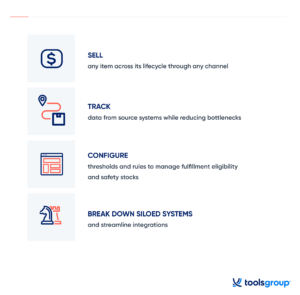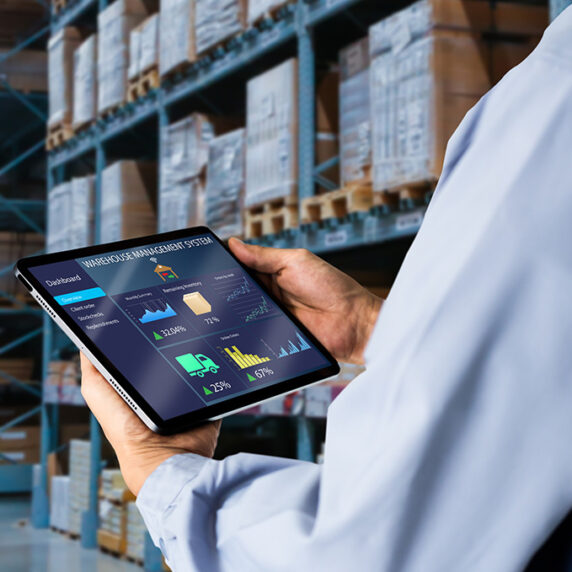Only as Good as Your Data: Why Supply Chain Digital Twins Require Real-Time Data Unification
The term “digital twin” is a little mysterious. And the application of one even moreso.
A digital twin is a model that can be created for a number of things – a jet engine, a factory, even a human heart.
But here, we’ll be talking about supply chain digital twins.
A supply chain digital twin is a complete model of your supply chain that allows you to run what-if scenarios and determine the most efficient use of resources for fulfilling demand.
It brings data that is stored in different silos across an organization all into one model. Think of it like a digital puzzle in which all the different pieces of your network and operations click into place.
Unfortunately, despite the manifold benefits of a true digital twin, creating one that reflects an accurate, up-to-date status of your supply chain has been near-impossible – until now.
With the advent of true “single source of truth” inventory visibility, a digital twin is a more feasible goal than ever before.
Let’s take a look at the challenges associated with digital twins and how real-time data systems are changing the game for companies looking to leverage them.
Supply Chain Digital Twins: Why You Need Them
As supply chain disruptions seem to be here to stay (and increasing in amplitude), planners across industries are looking for ways to make more accurate planning decisions – and digital twins are a great tool for that.
They enable planners to perform scenario planning, which is essential in the age of unified commerce.
They ingest information like transportation plans or shipment delays and model the implications of unexpected events.
They help weed out bottlenecks and alert planners to inefficiencies or imbalances within the supply chain network.
In short, they help users make better decisions, much faster, resulting in improved financial performance, inventory efficiency, and customer satisfaction.
Digital Twin Applications
For instance, say you’re a manufacturer or distributor.
With a digital twin, you could run scenarios to see how a new distribution center would affect your logistical costs, or how fulfilling an order from your warehouse in Pennsylvania would be more efficient than fulfilling from Kansas.
Or perhaps you’re a retailer and you’re expanding your omnichannel network.
A digital twin would give every decision-making team a better understanding of how to handle that new ship-from-store policy and help manage fulfillment through multiple and varied channels.
This would increase efficiency, lowering inventory and logistics costs while still meeting customer demand.

It would also go a long way to supporting more sustainably supply chain practices, limited carbon emissions and reducing the impact of excess inventory on the environment.
And as consumers and regulators increasingly call for greater visibility and transparency along supply chains, digital twins are transforming from a nice-to-have to a must-have.
In fact, it’s expected that more than 90% of IoT platforms will utilize some aspect of digital twins by 2026.
The Obstacles to Digital Twins
So what’s standing in the way of companies leveraging these advantages?
Data.
Big, clunky, siloed, and out-of-date data.
Think about these supply chain networks for a moment.
There are so many teams and departments and supply chain nodes, all with their own systems and solutions. (And if your company has done any mergers and acquisitions, you may even be facing different ERP, WMS, OMS, and POS systems that all have to be reconciled).
Few of these systems talk to each other. Or if they do, they may as well have mailed their data, it’s so old.
These silos and this network-wide latency are why so many companies have multiple “digital twins” that are more fraternal than identical or that would have been accurate…a week ago.
And in the meantime, the world keeps moving – faster and faster, in fact – and inventory is moving along with it.
Customers are buying items, returning items, exchanging them, buying things for the holiday season – all within supply chain networks that were not originally constructed to support current consumer expectations and buying habits.
How Real-Time Inventory Visibility Makes The Digital Twin Possible
Imagine if you had a way to gather all your data, in real-time, and serve it to every planning and execution system. No pesky silos, no lags in information. You could have all your data at your fingertips.
Good news – this exists.
It’s called a dynamic data unification platform.
It creates a “single source of truth” by compiling real-time inventory data and insights from across supply, demand, and operations.
It tracks everything – every in-store POS purchase, every online order, every item fulfilled from every location.
Then, it serves those data insights to every planning and execution system throughout your organization. In real-time.
Behold – an actual digital twin that reflects the entire supply chain. Not just a microcosm of one department or one node of the network. A living snapshot of your entire supply chain.
With these insights, you can:

This means your team has greater control over resources, time, and customer satisfaction.
The Benefits of a Real-Time Digital Supply Chain Twin
A digital twin reaps enormous benefits for your business, your team, your customers, and the environment.
This is what unified commerce is all about – creating a seamless experience for the customers regardless of touchpoint while still achieving company KPIs.
With real-time data, you can make sure the right product gets to the right customer at the right time.
This results in:
- Increased customer satisfaction and brand loyalty
- Improved margins through reduced inventory and greater sell-through
- Reduced costs for shipping, handling, and waste
- Smaller carbon footprints, thanks to more efficient shipping and reduced obsolescence
- Greater planner productivity, reducing workforce strain and freeing up resources for higher-level strategic activities and career advancement
So if you’re looking to leverage advantages like these and elevate your supply chain performance, remember – start with your data.






